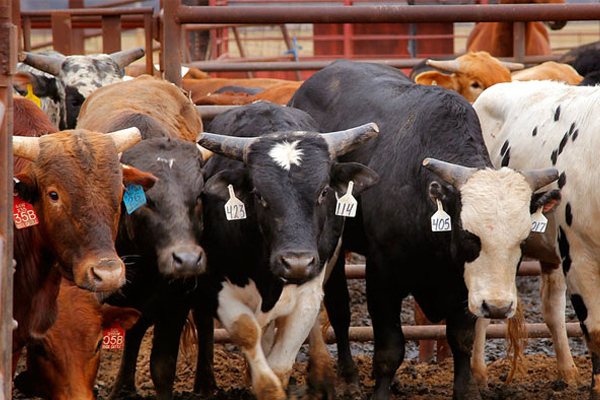May 27th 2021

Using leather does not mean more cattle are reared, finds research
- Research commissioned by US leather industry draws on 25 years of government data
- Hide prices drop 50% over 25 years – while dairy and beef cattle numbers remain similar
- Ending leather use would significantly increase landfill and greenhouse gas emissions
- Industry examines leather’s role in the sustainability of the fashion sector
May 27, 2021 Washington DC: The number of cattle reared for meat and dairy production would remain the same even if people stopped buying leather, says new research published today. However, the environmental impact would be significant. The burning or disposal in landfills of 33 million unused US hides would generate more than 750,000 metric tons of CO2 emissions every year – and fill all US landfill sites within four years. Globally this would see 300 million hides wasted and 6.6 million tons of surplus emissions every year.
The US leather industry is helping cattle ranchers target zero waste by currently recycling 85% of cattle hides produced compared to a worldwide estimate of just 60%. Alongside the immediate impact of disposing of waste hides are the indirect environmental impacts created as we source alternative materials, not only from the petrochemical industry but also from new crops and new materials.
The report ‘Quantifying the Relationship Between US Cattle Hide Prices/Value and US Cattle Production’ was commissioned by the Leather & Hide Council of America [L&HCA] and was led by Dr. Gary W. Brester, Professor Emeritus at Montana State University, and leading Agricultural Economist Dr. Kole Swanser, PhD.
It used 25 years of government price data for premium US steer hides which produce some of the most valuable leather in the world. Those hides averaged $36 per piece, or 2.2% of the total value of the animal in recent years. Due to price, these hides were most likely to have an influence on cattle numbers, but no evidence was found.
Dr. Brester commented:
“We have been asked, from an agricultural and economic standpoint, to look at the relationship between hides and cattle farming. The results, tracked over 25 years, tell us that hides are a by-product and exert no direct influence on cattle numbers. Indirect impacts can be calculated and are less than 0.3 percent.
Data showed that despite hide prices falling by more than 50% over the last 25 years, cattle numbers are unchanged.
Asked what would happen if leather use stopped entirely, Dr. Brester said: “We would have an environmental problem”.
L&HCA President, Steve Sothmann explained why the report had been commissioned:
“As global populations become more urbanized we have less understanding of how farming works. This results in misconceptions, for example that not producing leather would be good for the environment and mean smaller dairy and meat industries. Or at an extreme that there are ‘leather farms’ that raise cattle purely for leather purposes.”
“This report economically establishes that hides are a by-product of the dairy and meat industries, not a driver. It also shows that ending the use of leather would not stop cattle production. In fact, there is a strong case to be made that the carbon footprint of the hide starts at the point of purchase from the suppliers. Indeed one might argue that processing hides into leather delivers a net carbon saving against alternative means of disposal. ”
With the industry’s ongoing investment in traceability in the supply chain, quality standards in manufacturing developed with NGOs including the National Wildlife Federation (NWF) and World Wildlife Fund (WWF), and new technologies to reduce chemical use, Sothmann looked to the future concluding:
“Cutting out leather will damage the environment, cause more waste, more greenhouse gas emissions and more demand for cheap, often polluting, substitutes. We need to put sustainability at the heart of our approach to tackling fast fashion and delivering on our ESG responsibilities. There are no perfect solutions, but there is a shared responsibility for honest and informed discussion and for finding the best way forward.”
A full copy of the research report can be downloaded here.
About The Leather And Hide Council Of America
Formed by the 2020 merger of the United States Hide, Skin and Leather Association (USHSLA) and Leather Industries of America (LIA), the Leather and Hide Council of America (LHCA) is a full-service industry trade association representing the entire U.S. leather supply chain, including meatpackers, hides and skins processors, traders, leather tanners, finished leather goods producers, footwear companies, chemical suppliers, machinery producers, trade media and market reporters, freight forwarders, transportation service providers, financial institutions and more. The association provides its members with government, public relations, and international trade assistance and support. LHCA is a cooperator organization under the U.S. Department of Agriculture’s foreign market development programs, assisting U.S. firms develop new markets for U.S. agricultural exports. LHCA is at the forefront of the industry’s needs, providing members with education and technical information to compete in today’s global marketplace.




